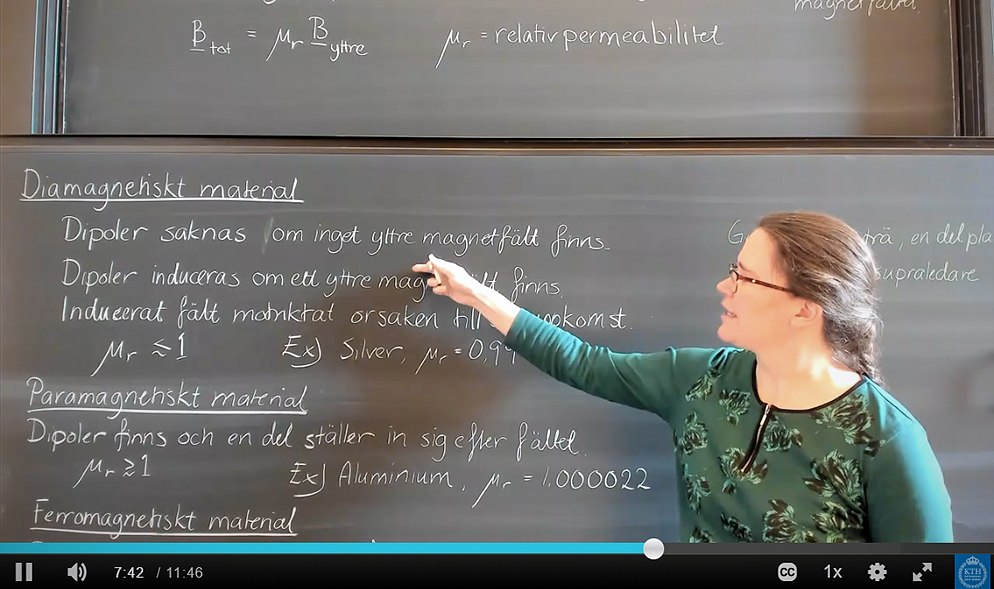
Organising education online – despite everything
How have teachers coped with the switch to distance education?
“It is working remarkably well and is easier than I had imagined,” says Applied Physics Associate Professor Anna Burvall. Even so, she hopes to be able to be back in the lecture hall as soon as possible – or at least by August.
When in principle, all university teachers in the country went over to teaching online, some people described it as a gigantic educational experiment. While certain teachers are used to working online, others have had to enter uncharted waters for them.
“I like being in the lecture hall and by rights, am against this in a way, but it is clearly something you are able to learn,” says Burvall , a month after the switch.
When the decision came that Sweden was going to close its universities, she had already made some preparations, acquiring video equipment and she had even had time to record two lectures. She upgraded her equipment that same day with a better microphone and webcam that she could record in front of a blackboard with.
“I didn’t feel that comfortable standing in front of a camera or of the idea of uploading educational videos online, but we haven’t really had much choice. I’ve now learned the tricks of the trade in open view as it were, I don’t do that much reviewing once a lecture has been recorded and simply get it uploaded.”
She prefers to do the recording on site in the lecture hall. Each lecture is divided into 10-minute segments and uploaded to the digital platform KTH Play. Each lecture is followed by a written assignment with a strict deadline – the idea is to encourage the students to continue their studies at the same pace.
So, your teaching is continuing as normal?
“Yes, going by the responses from students, it is working well. They can find it a bit tougher than usual, but they think they can stay on track with the course – now it’s simply a case of maintaining the level all the way.”
The students, a total of 170 on two courses, also get virtual laboratory sessions, both recorded and live streamed. The lab managers supervise and demonstrate experiments, after which the students write their lab reports.
“Lab sessions online sounds a bit absurd, but our lab managers have developed a concept that works and can be used for assessment purposes.”
The work load has gone up and down. There has been a lot of weekend and evening work in the first few weeks. But this has calmed down now. Thanks to the recordings, she has also been able to save some time, as there is some overlap in the course content for the two courses.
What has the switch been like for you?
“It went surprisingly well at first. I am now noticing some of the more difficult aspects, such as the lack of a social context, not meeting people, students and colleagues. But it is clearly working.”
What are your thoughts surrounding the uncertainty about when we will get back to a “normal working day”?
“I expect this situation to continue until the summer but hope things will be more normal in August, at least to a degree, such as when it comes to exams, for example. In the autumn I have a section that is very lab intensive. How is that going to work out? These are the things that are spinning round in my head.”
When the coronavirus has blown over – will you continue with distance education, do you think?
“That’s an interesting question and I would really like to see a discussion about how we can utilise what has been developed within online education, and using this as a complement.”
“Having said that, education in a physical environment offers big advantages, on the social side, it is easier to spot students that are falling behind – in the long run, it is a better education.”
Text: Christer Gummeson

